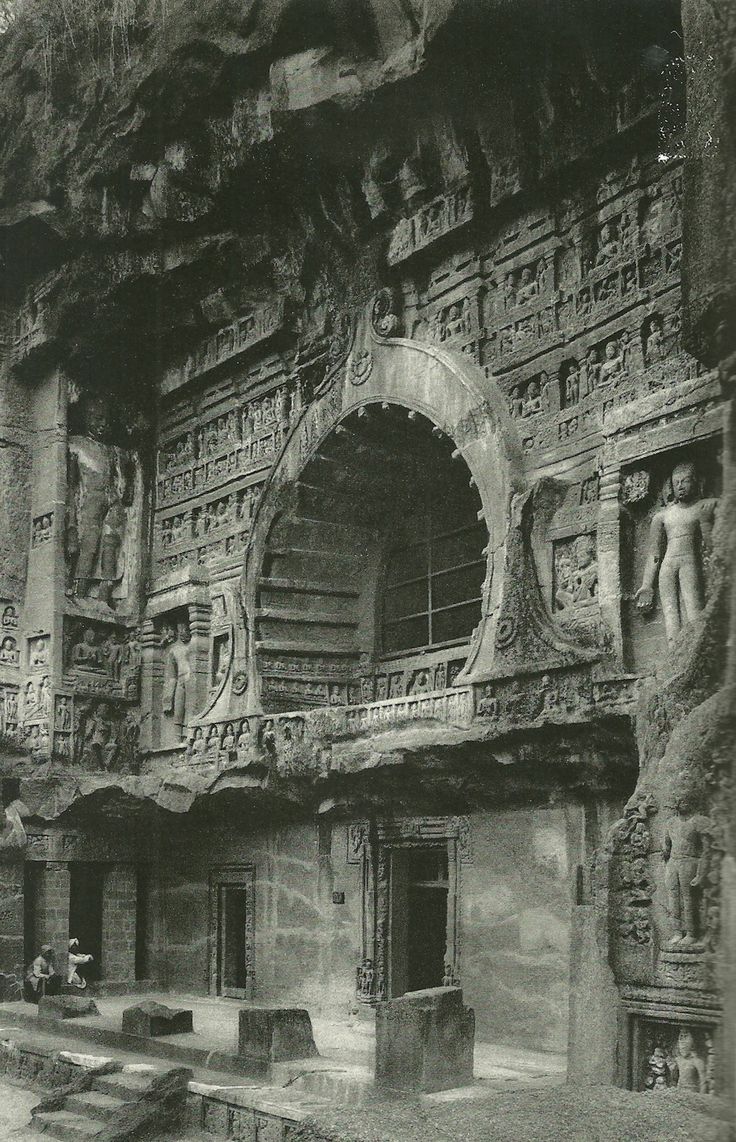
📍 Location & Overview(The Ajanta and Allora caves’ histories)

The 30 rock-cut Buddhist caverns known as the Ajanta caverns are located in Aurangabad on a horseshoe-shaped cliff along the Waghora River. They were sculpted between the second and sixth centuries BCE. Buddhist monks used these caverns as prayer halls (chaityas) and monasteries (viharas)..
🕰️ Historical Background
The history of the Ajanta Caves can be divided into two main phases:
-
The earliest caves, including Caves 9 and 10, are from the Satavahana Period (2nd century BCE–1st century CE), which is marked by early Buddhist stupa shapes and simple yet striking sculptures.
-
Vakataka Period- (5th–6th century CE): Under the patronage of the Vakataka monarch Harishena, the latter period witnessed a notable advancement in art. This period’s caves, such as Caves 1, 2, 16, and 17, are lavishly decorated with sculptures, frescoes, and paintings.🎨 Art and Architecture
“Notably, artists at Ajanta created globally acclaimed Buddhist murals that depict Jataka tales through expressive faces, fluid lines, and detailed shading. Furthermore, alongside these ancient Indian paintings, they carved elaborate pillars, arched ceilings, and spacious monastic halls directly into rock—showcasing exceptional architectural skill and, consequently, highlighting India’s rich artistic and spiritual heritage.”
🧘 Spiritual Significance(The Ajanta and Allora caves’ histories)
For centuries, Buddhist monks lived and meditated in the Ajanta Caves, making it a key hub of Mahayana Buddhism. They used the site as a monastic retreat during the monsoon season, spreading Buddhist philosophy through devotion and study. Today, Ajanta remains a vital spot for spiritual tourism and Buddhist heritage exploration.
🛤 Rediscovery
As Buddhism declined in India, people gradually abandoned the Ajanta Caves, leaving them hidden and forgotten for centuries. In 1819, British officer John Smith rediscovered the site during a hunting expedition, bringing global attention to India’s ancient art heritage. This monumental discovery reintroduced the world to the rich legacy of Buddhist cave art, turning Ajanta into a cornerstone of Indian cultural tourism and a celebrated symbol of the country’s artistic and spiritual history.
🟠 Ellora Caves – A Symbol of Religious Harmony(The Ajanta and Allora caves’ histories)
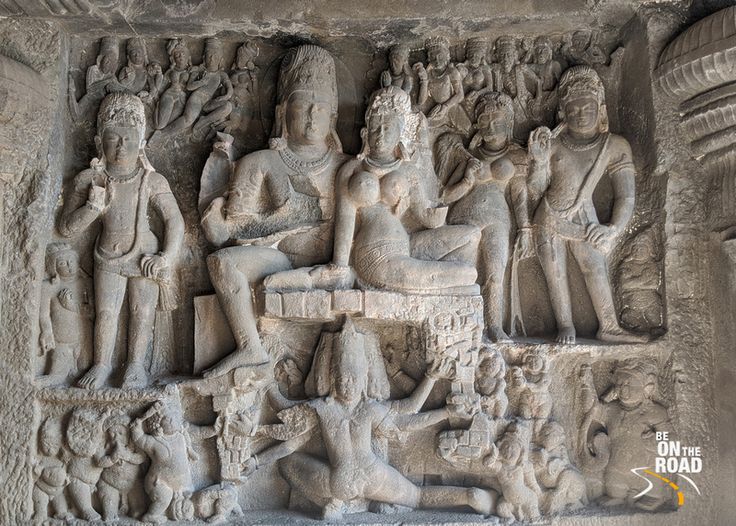
📍 Location & Overview(The Ajanta and Allora caves’ histories)-
Located about 30 kilometers from Aurangabad, the Ellora Caves form a remarkable complex of 34 rock-cut temples and monasteries. Ancient Indian craftsmen carved these caves between the sixth and tenth centuries CE to represent the three major religions of the time—Buddhism, Hinduism, and Jainism. These sacred spaces highlight the spirit of religious harmony, spiritual unity, and architectural diversity that defined early Indian civilization. Today, they stand as a top destination for cultural tourism in India.
🕰️ Historical Background(The Ajanta and Allora caves’ histories)-
The Rashtrakuta dynasty, especially emperors Dantidurga and Krishna I, actively supported the creation of the Ellora Caves. Later, rulers from the Kalachuri and Yadava dynasties continued this architectural and spiritual legacy. Unlike Ajanta, which features exclusively Buddhist art, Ellora reflects India’s multicultural heritage, bringing together Buddhist, Hindu, and Jain traditions in one unified complex. This makes Ellora a powerful symbol of religious coexistence and diverse temple architecture in ancient India.
-
Buddhist Caves (Caves 1–12)(The Ajanta and Allora caves’ histories)
– the oldest, with monasteries that included Buddha statues and basic carvings
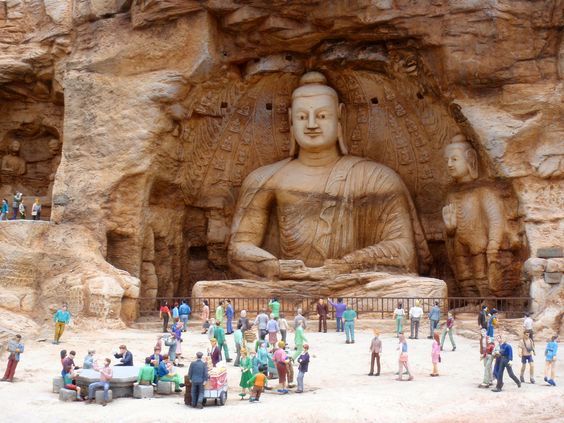
-
Hindu Caves (Caves 13–29)(The Ajanta and Allora caves’ histories)
– Cave 16, the well-known Kailasa Temple, a single monolithic building that symbolizes Mount Kailash, is the most striking of them all.
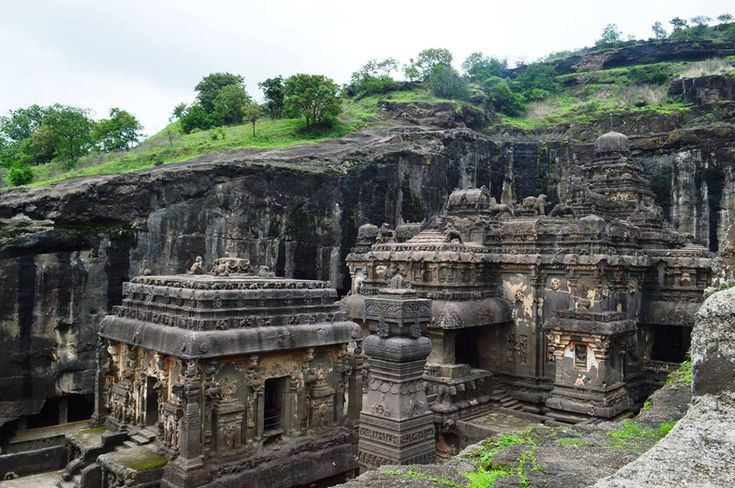


- Jain Caves (Caves 30–34) – These later-created caverns, which have intricate sculptures of Tirthankaras, are a reflection of Jain ascetic principles.
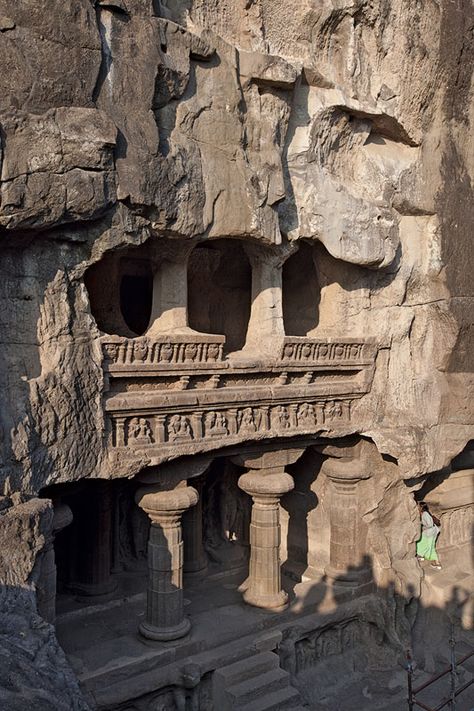
🛕 Kailasa Temple – A Marvel of Architecture
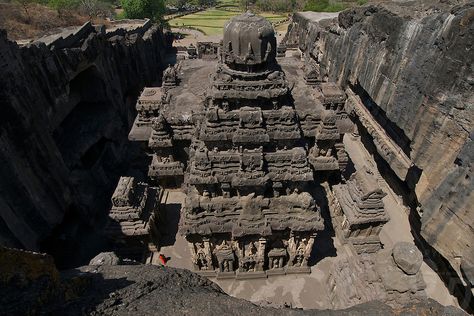
The Kailasa Temple in Ellora stands as perhaps the most remarkable architectural marvel of ancient India. Skilled artisans carved it top-down from a single rock over several decades, showcasing unmatched dedication and precision. They built the temple to honor Lord Shiva, adorning it with towering pillars, life-sized elephant sculptures, and intricate carvings. The temple reflects not only deep religious devotion but also extraordinary engineering brilliance that continues to astonish modern-day architects and cultural heritage tourists.
🏛️ Artistic Highlights
Compared to Ajanta, Ellora features sculpture-driven architecture, with artists carving cosmic scenes from the Ramayana and Mahabharata, including intricate gods, goddesses, divine love, and mythological battles. In contrast, the Jain caves offer a minimalist style, enriched with exquisite carvings, non-violent symbols, and meditative poses that reflect Jain spirituality.
✨ Legacy and Significance
“Together, Ajanta and Ellora narrate the tale of India’s spiritual tourism, ancient Indian architecture, and artistic brilliance. On one hand, Ellora’s multifaith sculptures showcase how medieval India embraced religious tolerance and cultural diversity. On the other hand, Ajanta’s paintings reflect the meditative and contemplative aspects of early Buddhism.”
“Moreover, these iconic UNESCO World Heritage Sites continue to inspire art lovers, history enthusiasts, and spiritual travelers from around the globe. In fact, tourists and researchers actively explore these sites, considering them masterpieces of Indian heritage tourism and a must-visit destination for anyone seeking to experience India’s historical places.”
📌 Conclusion
The Ajanta and Ellora Caves echo centuries of artistic brilliance, unwavering dedication, and cultural fusion. Rather than standing as mere stone monuments, these masterpieces serve as living temples of time. The peaceful Ajanta murals and the grand, dramatic Ellora sculptures continue to captivate heritage travelers and art lovers alike. Together, they preserve and showcase India’s glorious past, offering a timeless journey through its spiritual heritage and ancient craftsmanship.
Photo gallery
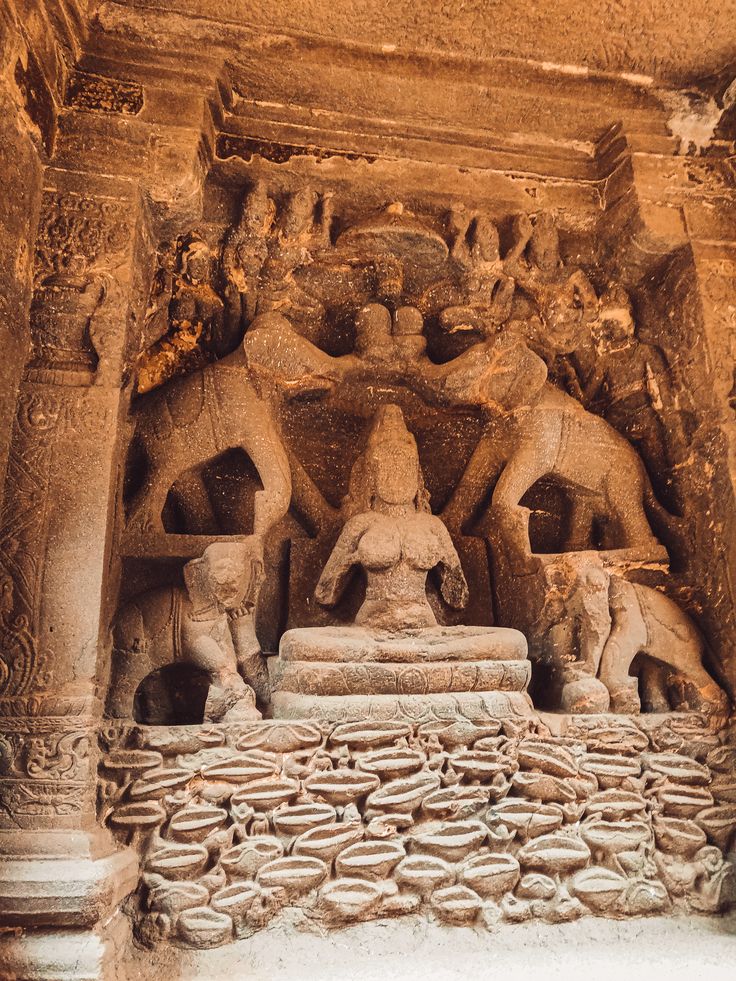

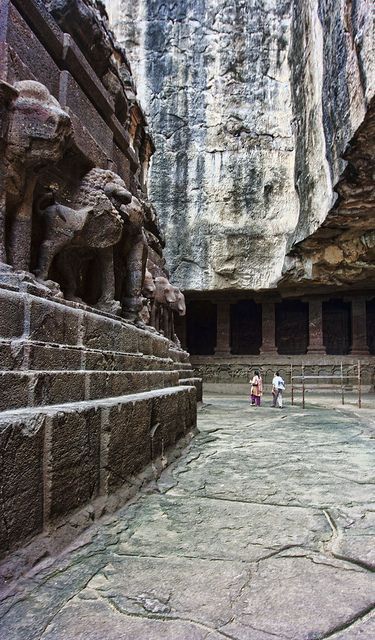
Ajanta & Ellora Caves (Maharashtra)

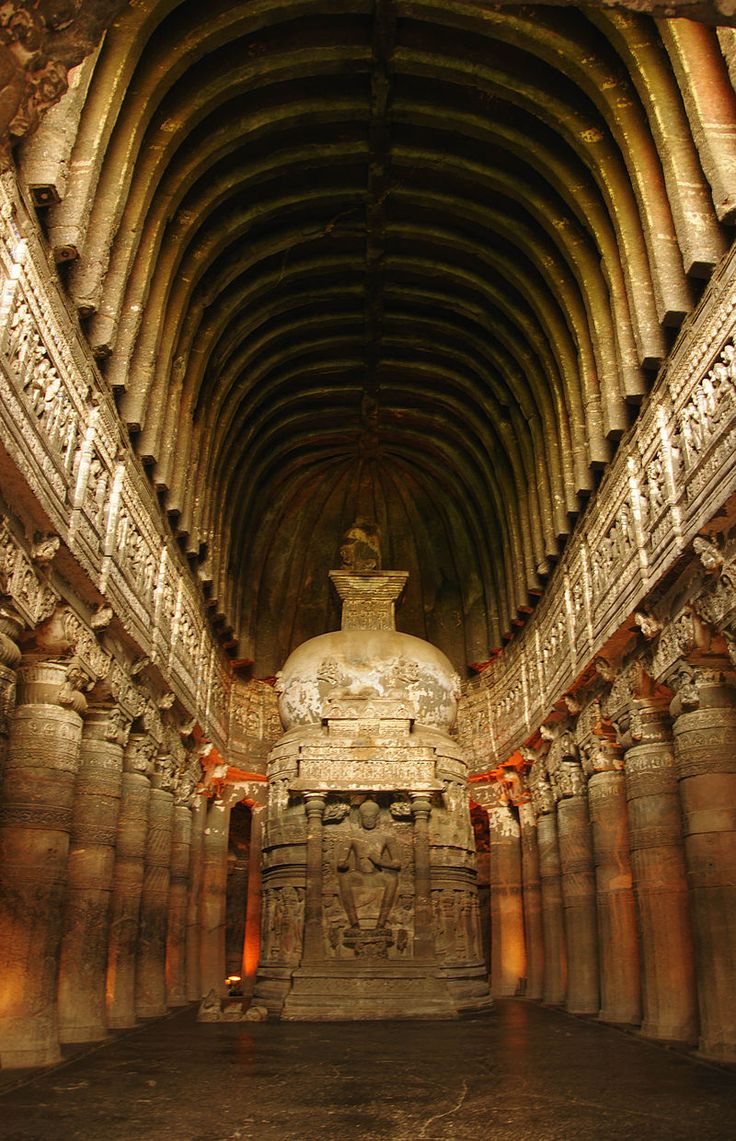
India is home to many ancient wonders, but two of the most spectacular rock-cut cave systems in the world are the Ajanta and Ellora Caves in Maharashtra. These UNESCO World Heritage Sites, which were built over many centuries by several dynasties and religious organizations, are a fusion of art, architecture, religion, and devotion. Despite being around 100 kilometers apart, they are frequently discussed together because of their similar artistic and historical significance of The Ajanta and Allora caves’ histories.
🟢 Ajanta Caves – A Glimpse into Buddhist Art and Philosophy(The Ajanta and Allora caves’ histories)

📍 Location & Overview(The Ajanta and Allora caves’ histories)

The 30 rock-cut Buddhist caverns known as the Ajanta caverns are located in Aurangabad on a horseshoe-shaped cliff along the Waghora River. They were sculpted between the second and sixth centuries BCE. Buddhist monks used these caverns as prayer halls (chaityas) and monasteries (viharas)..
🕰️ Historical Background
The history of the Ajanta Caves can be divided into two main phases:
-
The earliest caves, including Caves 9 and 10, are from the Satavahana Period (2nd century BCE–1st century CE), which is marked by early Buddhist stupa shapes and simple yet striking sculptures.
-
Vakataka Period- (5th–6th century CE): Under the patronage of the Vakataka monarch Harishena, the latter period witnessed a notable advancement in art. This period’s caves, such as Caves 1, 2, 16, and 17, are lavishly decorated with sculptures, frescoes, and paintings.🎨 Art and Architecture
“Notably, artists at Ajanta created globally acclaimed Buddhist murals that depict Jataka tales through expressive faces, fluid lines, and detailed shading. Furthermore, alongside these ancient Indian paintings, they carved elaborate pillars, arched ceilings, and spacious monastic halls directly into rock—showcasing exceptional architectural skill and, consequently, highlighting India’s rich artistic and spiritual heritage.”
🧘 Spiritual Significance(The Ajanta and Allora caves’ histories)
For centuries, Buddhist monks lived and meditated in the Ajanta Caves, making it a key hub of Mahayana Buddhism. They used the site as a monastic retreat during the monsoon season, spreading Buddhist philosophy through devotion and study. Today, Ajanta remains a vital spot for spiritual tourism and Buddhist heritage exploration.
🛤 Rediscovery
As Buddhism declined in India, people gradually abandoned the Ajanta Caves, leaving them hidden and forgotten for centuries. In 1819, British officer John Smith rediscovered the site during a hunting expedition, bringing global attention to India’s ancient art heritage. This monumental discovery reintroduced the world to the rich legacy of Buddhist cave art, turning Ajanta into a cornerstone of Indian cultural tourism and a celebrated symbol of the country’s artistic and spiritual history.
🟠 Ellora Caves – A Symbol of Religious Harmony(The Ajanta and Allora caves’ histories)

📍 Location & Overview(The Ajanta and Allora caves’ histories)-
Located about 30 kilometers from Aurangabad, the Ellora Caves form a remarkable complex of 34 rock-cut temples and monasteries. Ancient Indian craftsmen carved these caves between the sixth and tenth centuries CE to represent the three major religions of the time—Buddhism, Hinduism, and Jainism. These sacred spaces highlight the spirit of religious harmony, spiritual unity, and architectural diversity that defined early Indian civilization. Today, they stand as a top destination for cultural tourism in India.
🕰️ Historical Background(The Ajanta and Allora caves’ histories)-
The Rashtrakuta dynasty, especially emperors Dantidurga and Krishna I, actively supported the creation of the Ellora Caves. Later, rulers from the Kalachuri and Yadava dynasties continued this architectural and spiritual legacy. Unlike Ajanta, which features exclusively Buddhist art, Ellora reflects India’s multicultural heritage, bringing together Buddhist, Hindu, and Jain traditions in one unified complex. This makes Ellora a powerful symbol of religious coexistence and diverse temple architecture in ancient India.
-
Buddhist Caves (Caves 1–12)(The Ajanta and Allora caves’ histories)
– the oldest, with monasteries that included Buddha statues and basic carvings

-
Hindu Caves (Caves 13–29)(The Ajanta and Allora caves’ histories)
– Cave 16, the well-known Kailasa Temple, a single monolithic building that symbolizes Mount Kailash, is the most striking of them all.



- Jain Caves (Caves 30–34) – These later-created caverns, which have intricate sculptures of Tirthankaras, are a reflection of Jain ascetic principles.

🛕 Kailasa Temple – A Marvel of Architecture

The Kailasa Temple in Ellora stands as perhaps the most remarkable architectural marvel of ancient India. Skilled artisans carved it top-down from a single rock over several decades, showcasing unmatched dedication and precision. They built the temple to honor Lord Shiva, adorning it with towering pillars, life-sized elephant sculptures, and intricate carvings. The temple reflects not only deep religious devotion but also extraordinary engineering brilliance that continues to astonish modern-day architects and cultural heritage tourists.
🏛️ Artistic Highlights
Compared to Ajanta, Ellora features sculpture-driven architecture, with artists carving cosmic scenes from the Ramayana and Mahabharata, including intricate gods, goddesses, divine love, and mythological battles. In contrast, the Jain caves offer a minimalist style, enriched with exquisite carvings, non-violent symbols, and meditative poses that reflect Jain spirituality.
✨ Legacy and Significance
“Together, Ajanta and Ellora narrate the tale of India’s spiritual tourism, ancient Indian architecture, and artistic brilliance. On one hand, Ellora’s multifaith sculptures showcase how medieval India embraced religious tolerance and cultural diversity. On the other hand, Ajanta’s paintings reflect the meditative and contemplative aspects of early Buddhism.”
“Moreover, these iconic UNESCO World Heritage Sites continue to inspire art lovers, history enthusiasts, and spiritual travelers from around the globe. In fact, tourists and researchers actively explore these sites, considering them masterpieces of Indian heritage tourism and a must-visit destination for anyone seeking to experience India’s historical places.”
📌 Conclusion
The Ajanta and Ellora Caves echo centuries of artistic brilliance, unwavering dedication, and cultural fusion. Rather than standing as mere stone monuments, these masterpieces serve as living temples of time. The peaceful Ajanta murals and the grand, dramatic Ellora sculptures continue to captivate heritage travelers and art lovers alike. Together, they preserve and showcase India’s glorious past, offering a timeless journey through its spiritual heritage and ancient craftsmanship.
Photo gallery


